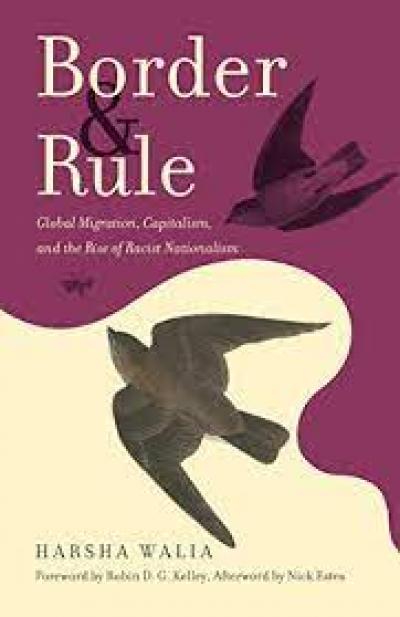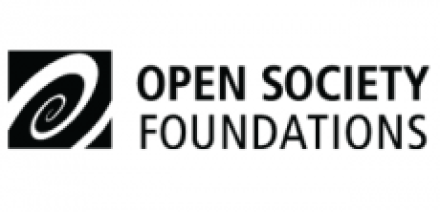Book Review: Border and Rule: Global Migration, Capitalism, and the Rise of Racist Nationalism
Posted:
Time to read:
Guest post by Rémy-Paulin Twahirwa. Rèmy is a PhD Student at the LSE Department of Sociology. He is currently co-editing an upcoming collective zine on postcolonial futures. You can follow him on Twitter at @remypaulint.
Review of Border and Rule: Global Migration, Capitalism, and the Rise of Racist Nationalism by Harsha Walia (Haymarket Books 2021).

What makes Walia’s contribution unique is its transnational and intersectional approach. By examining border regimes in the Americas, Europe, Australia, the Gulf States and across Asia, she shows how different states in the Global North and in the Global South share similar ‘logics of border formation—displacing, immobilizing, criminalizing, exploiting, and expelling migrants and refugees—to divide the international working class and consolidate imperial, racial-capitalist, state, ruling-class, and far-right nationalist rule.’ (p.2). Moreover, this method highlights the intercorrelation between global capitalism, the legacies of colonialism, the contemporary forms of imperialism and neoliberalism through the (over-)borderisation of the world.
The book discusses the relationships between forced displacement, empire, race making projects and the border. Here Walia uncovers the connections between processes of (1) exclusion through confinement in prisons and detention centres and criminalisation, (2) exploitation, and (3) killing through racial violence which characterize modern day policing and military expeditions in and outside the US. I was most inspired by Walia’s analysis of the ‘global migration crisis’ and how it is rooted in economic dispossession and deprivation which lead to mass and forced displacements, worsened by dynamics such as climate change. Therefore, for Walia, our era is defined by the (re)production of the conditions of mass displacement. In short, it’s a ‘displacement crisis, not a border crisis’, caused by ‘multifarious and interwoven systems of globalized capitalism, imperialism, and climate catastrophe.’ (p.74). Pushing us to rethink the reasons for migration, Walia’s argument can be summed up by the popular line from Warsan Shire’s poem ‘Home’: ‘no one leaves home unless/home is the mouth of a shark’.
Walia then examines four border governance strategies: exclusion, territorial diffusion, commodified inclusion, and discursive control. She shows how these seek to create and manage migrants as ‘illegals’ and ‘undesirables’. The first strategy, which is most discussed in migration research, concerns the use of walls, detention centers and deportation to expel people on the move.
For the second strategy, Walia shows how border rule is expanding around the world and is no longer a specific feature of the Global North: ‘Territorial diffusion’, notes Walia, ‘relies on biometric surveillance and disciplinary practices within the state, as well as imperial outsourcing beyond the state’s borders.’ (p.84). Border rule, embodied in a set of institutions, regulations and practices, defines not only who can enter a territory, but also the kind of life (or death) they can have.
The third strategy relates to Agamben’s exclusive inclusion in which one is integrated into the juridical order of the Western state by being cast out from it. However, Walia’s point here is that people on the move are excluded from the state’s juridical and political order, only to be integrated into it through the exploitation of their labour power.
The last strategy examined by Walia describes the discursive practices that characterize people on the move as ‘illegals’, ‘bogus refugees’ or criminals and portrays their movements as a form of ‘crisis’ (p.85-86). Walia argues that these terms not only facilitate the negative racialisation of migrants and their differentiation from other categories of immigrants—and humans. They also support the control of their mobility and question their identity. Walia does not, however, go into further detail about the way in which this discursive control is executed, to what extent and its effects, and its political and social significances.
Border and Rule ends with a discussion of the rise and proliferation of far-right movements and political leaders around the world. This section of the book provides the nuanced insights into how race, ethnonationalism and nativism are being instrumentalised to divide and conquer people on a global scale. One striking example are the connections made by Walia between white nationalism in Donald Trump’s US, Zionism in Benjamin Netanyahu’s Israel, and Hindutva in Nerandra Modi’s India (p.172-178). These ‘three figureheads’ of ethnonationalism propagate ideas about who, to quote Nandita Sharma, is of place and who is not. The links are not only ideological, but also political and diplomatic in nature, connected through military and economic support. For instance, Walia highlights how the American Israel Public Affairs Committee and the United States India Political Action Committee have worked together in the ‘war on terror’ since 9/11 (p.172).
Border and Rule makes the case for a borderless future. As summed up by Nick Estes’ afterword, Walia asks us to name our enemies (the ‘imperial ruling class’) and stand with our friends (the ‘international working class’) (p.220). This is to say that border rule is not a self-perpetuating powerful regime that acts indiscreetly in a vacuum: there are real people (neighbours, friends, colleagues, etc.) who are subjected to the deadly power of the border as much as there are real people making profit out of it. This is why we need to go beyond just studying border regimes by actively resisting them. Harsha Walia remains optimistic about this possibility: people on the move and their allies are actively upholding their right to move, live and settle—and this is the only way this ‘crisis’ can be resolved. Harsha Walia makes a valuable contribution to this effort. Her book would have benefited from a more clearly explained theoretical framework and a better definition of the concepts used—in particular to make the book more accessible to non-academic and non-activist readers—but overall Walia presents a powerful argument in her book. The book, with a wide variety of secondary data, makes important and clear inroads towards questions of why and how border rules exist and how we can actively challenge them.
Any comments about this post? Get in touch with us! Send us an email, or post a comment here or on Facebook. You can also tweet us.
__________
How to cite this blog post (Harvard style)
Twahirwa, R-P. (2022) Book Review: Border and Rule: Global Migration, Capitalism, and the Rise of Racist Nationalism. Available at: https://www.law.ox.ac.uk/research-subject-groups/centre-criminology/centreborder-criminologies/blog/2022/05/book-review-0 [date]
Keywords:
Share:








